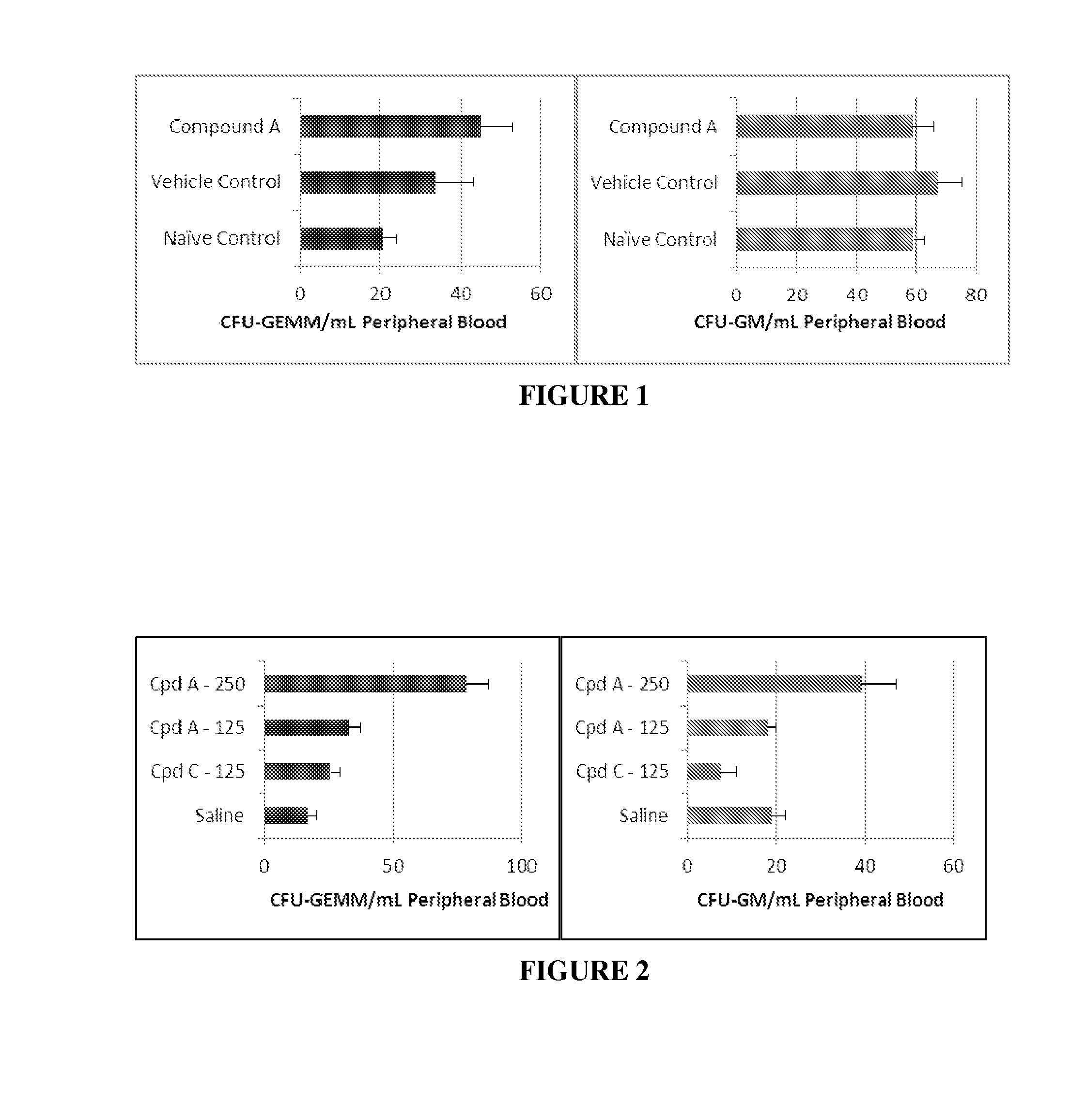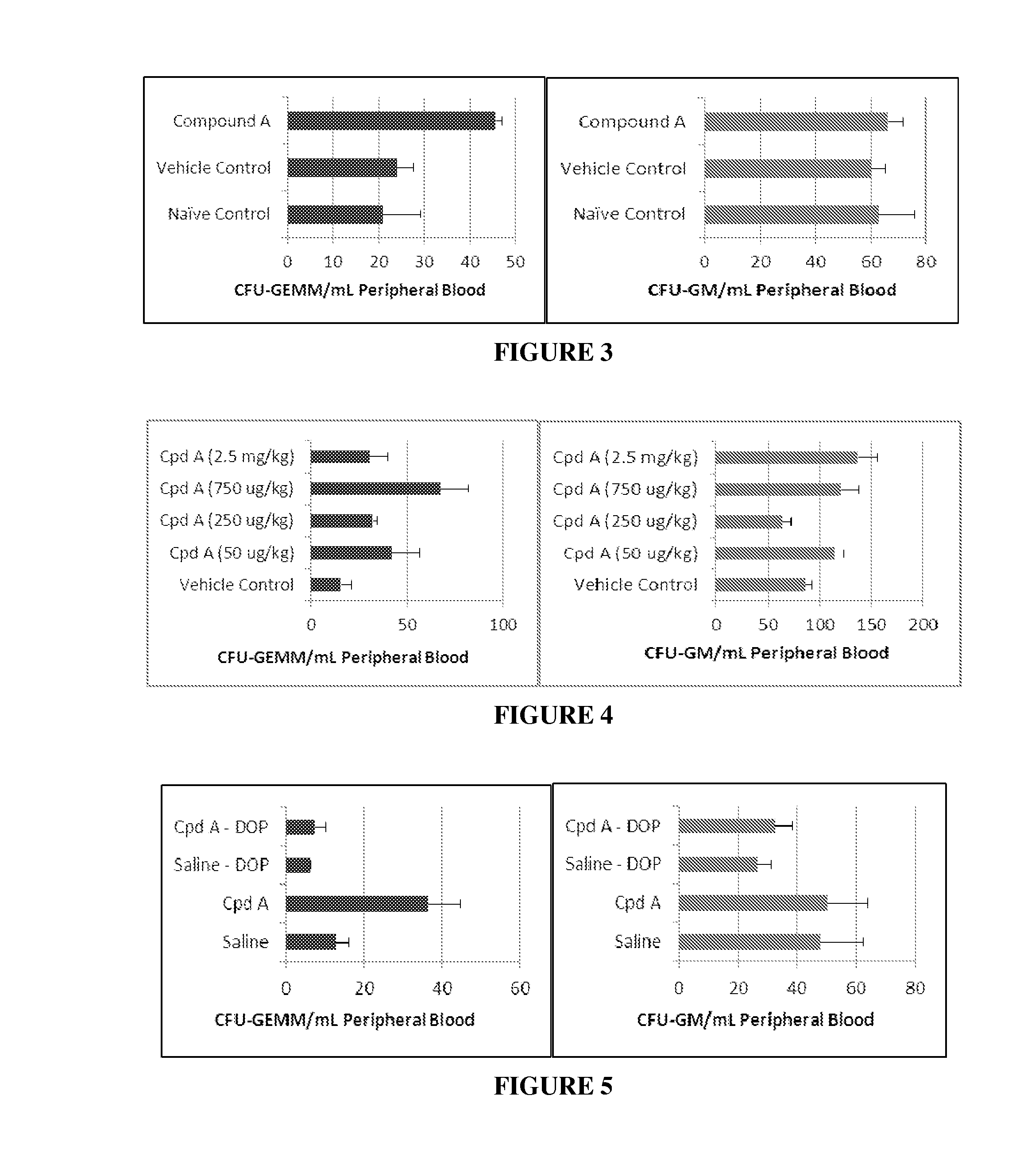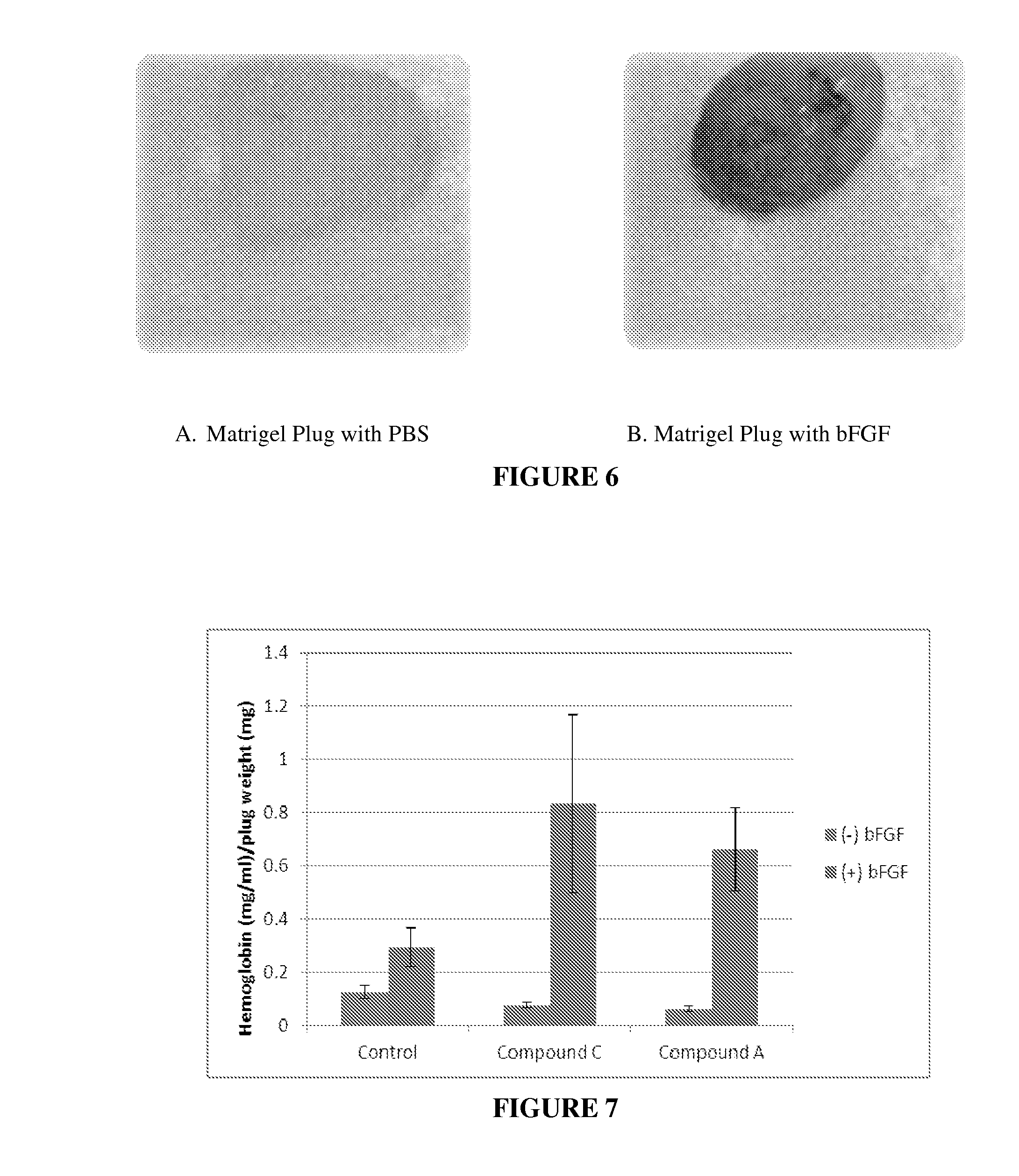Stem Cell Mobilization and Tissue Repair and Regeneration
a stem cell and tissue technology, applied in the field of stem cell mobilization and tissue repair and regeneration, can solve the problems of low success rate of stem cell transplantation in clinical trials for tissue regeneration, low degree of success rate of stem cell transplantation, and inability to homogeneous hsc populations, etc., to achieve strong inhibition of tnf secretion, reduce inflammation, and evaluate the potential anti-inflammatory effect of compound
- Summary
- Abstract
- Description
- Claims
- Application Information
AI Technical Summary
Benefits of technology
Problems solved by technology
Method used
Image
Examples
example 1
Mobilization of Mouse Stem Cells from Bone Marrow into Peripheral Blood After Single Subcutaneous Injection of Compound A
[0040]Stimulatory doses of Compound A activate quiescent stem cells, induce them to proliferate and egress from bone marrow into peripheral blood. This example shows that an increase in number of hematopoietic stem cells (HSC) and their hematopoietic progenitors (HPC) measured by colony-forming assay happens within 1 hr after injection of stimulatory dose of Compound A and causes no changes in either cell number or cell composition. DBA / 2J male mice (Jackson Laboratories) were subcutaneously injected with 0.9% saline (vehicle control) or 250 μg / kg of Compound A.
[0041]After 1 hour, mice were anesthetized and blood was collected through the orbital sinus with heparinized capillary tubes. To enumerate HSC and HPC in peripheral blood, cells were washed, counted and plated in semi-solid Methylcellulose (Stem cell technology) at 100,000 per dish (5 dishes / group) and pla...
example 2
Mobilization of Mouse Stem Cells from Bone Marrow into Peripheral Blood after Multiple Subcutaneous Injection of Compound A
[0045]The low levels of circulating HSPC are drastically increased in response to repeated stimulation with the cytokine G-CSF. This example is based on a protocol for a 5-day course of once-daily Compound A injections into DBA male mice similar to a G-CSF. An effective dose of Compound A was found previously to mobilize HSC 1 hr after single injection and was selected for this experiment.
[0046]DBA / 2J male mice (Jackson Laboratories) were subcutaneously injected with 0.9% saline (vehicle control), 250 μg / kg Compound A (ThinkPeptides) for 5 consecutive days. At 7 days post initial injection, peripheral blood from 3 mice per group was harvested from the orbital plexus using capillary tubes (VWR) and collected into EDTA-containing tubes (VWR). Blood was also harvested and pooled from 3 naïve mice to serve as a naïve control group.
TABLE 2Total number of CFU-GEMM and...
example 3
Effect of Sphingosine 1-Phosphate Gradient Disruption on Mobilization of Mouse Stem Cells from Bone Marrow into Peripheral Blood after Multiple Subcutaneous Injection of Compound A
[0049]Sphingosine 1-phosphate (S1P) has many important roles in mammalian cells, including contributing to the control of cell survival and proliferation. It acts via five receptors (S1PR1-5) that couple to heterotrimeric G proteins. S1P possesses a chemoattractive property for a variety of cells and recently been implicated in stem cell mobilization. HSC egress from extramedullary tissues depends on S1P gradient. S1P was shown to regulate HSC AMD3100 and G-CSF-induced mobilization (Juarez J G, Harun N, Thien M, et al. Sphingosine-1-phosphate facilitates trafficking of hematopoietic stem cells and their mobilization by CXCR4 antagonists in mice. Blood. 2012; 119(3):707-716. Massberg S, Schaerli P, Knezevic-Maramica I, et al. Immunosurveillance by hematopoietic progenitor cells trafficking through blood, ly...
PUM
| Property | Measurement | Unit |
|---|---|---|
| concentration | aaaaa | aaaaa |
| volume | aaaaa | aaaaa |
| molecular heterogeneity | aaaaa | aaaaa |
Abstract
Description
Claims
Application Information
 Login to View More
Login to View More - R&D
- Intellectual Property
- Life Sciences
- Materials
- Tech Scout
- Unparalleled Data Quality
- Higher Quality Content
- 60% Fewer Hallucinations
Browse by: Latest US Patents, China's latest patents, Technical Efficacy Thesaurus, Application Domain, Technology Topic, Popular Technical Reports.
© 2025 PatSnap. All rights reserved.Legal|Privacy policy|Modern Slavery Act Transparency Statement|Sitemap|About US| Contact US: help@patsnap.com



